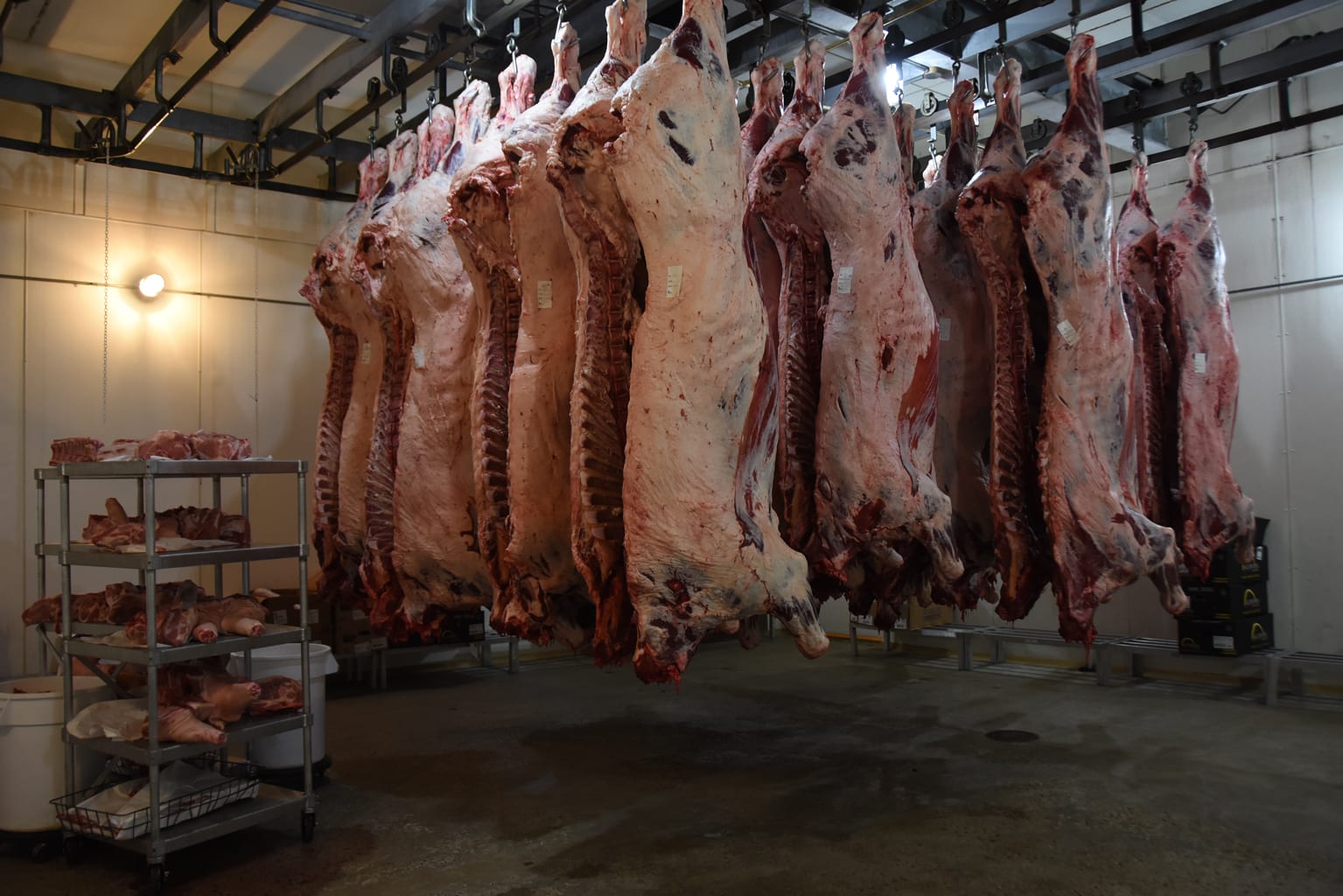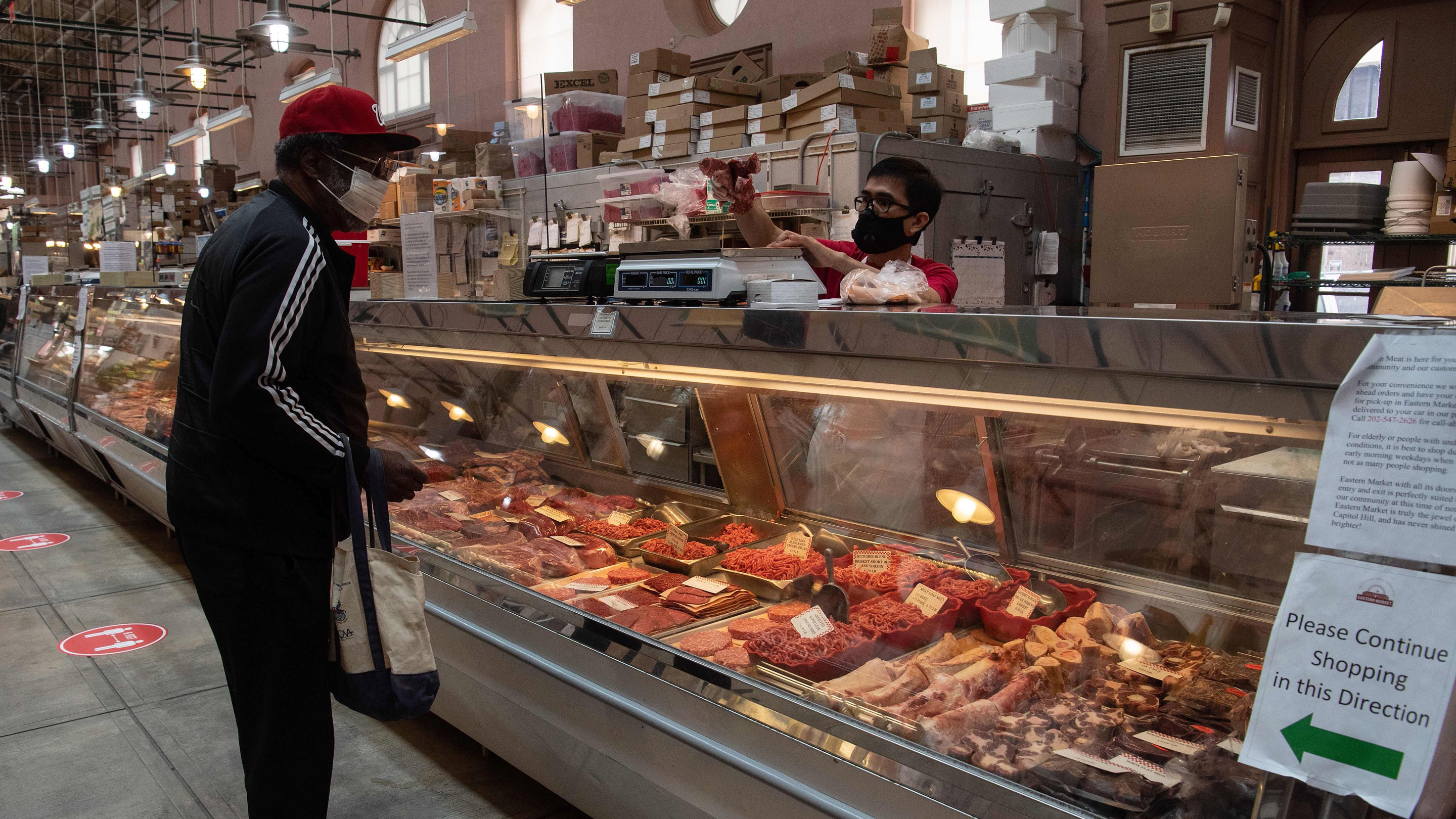What Makes Bagley Farms Meat Market Edwardsville IL Attract Attention for Meat Lovers
What Makes Bagley Farms Meat Market Edwardsville IL Attract Attention for Meat Lovers
Blog Article
Discover the Art of the Butcher's Cut in a Modern Meat Market
In the ever-evolving landscape of contemporary meat markets, the butcher's cut has transcended its traditional origins, combining olden workmanship with modern techniques. bagley farms meat market edwardsville il. Today's butchers are not simply processors of meat; they are knowledgeable artisans that highlight sustainability and ethical sourcing. Their competence in picking and preparing cuts tailored to details cooking needs offers an unrivaled eating experience. What truly establishes the contemporary butcher apart is their ability to build a deeper link between customers and the origins of their meat. How do these masters equilibrium tradition with technology, and what ramifications does this have for the future of meat consumption?
Advancement of Butchery Techniques

The mid-20th century saw butchery strategies better improved by scientific insights right into muscular tissue biology and meat aging, improving both tenderness and preference. Technologies like vacuum cleaner packaging and refrigeration extended item shelf-life, enabling butchers to diversify offerings and boost high quality control. This period also noted the increase of specialized equipment, such as band saws and meat slicers, which boosted precision and efficiency in meat handling.
Digital systems now assist in monitoring animal provenance and maximizing cuts to meet certain consumer preferences. Furthermore, a rebirth in artisanal butchery has arised, mixing traditional skills with modern-day knowledge to cater to customers looking for ethical and sustainable meat choices.

Comprehending Meat Cuts

Understanding the details of meat cuts is crucial for both butchers and customers seeking quality and worth. Each cut originates from a different part of the pet, giving distinct flavors, textures, and food preparation techniques. Proficiency of these distinctions not only boosts cooking experiences however also makes the most of the utility of each carcass. For butchers, specific cuts show skill and regard for the craft, guaranteeing minimal waste and ideal yield.
The main categories of meat cuts consist of primitive, sub-primal, and retail cuts. Primal cuts, such as the loin, rib, and chuck, are the huge sections originally separated from the carcass. Butchers after that break these down additionally into sub-primal cuts, before ultimately creating retail cuts readily available to consumers, like ribeye or tenderloin. Each phase requires cautious focus to anatomical framework and muscle structure.
Recognizing muscle mass make-up is important; muscles utilized more regularly by the animal often tend to be tougher and are best suited for slow cooking techniques, while less-used muscles, like those located in the loin, are extra tender and perfect for cooking or roasting. Familiarity with these distinctions equips customers directory to make enlightened selections, enhancing their culinary endeavors.
Choosing Quality Meat
Picking the ideal meat involves even more than simply choosing a visually enticing item from the display. The art of picking top quality meat calls for a discerning eye and knowledge of certain characteristics that signify quality and excellence.
Secondly, take into consideration the marbling, which refers to the white flecks of fat within the muscle. Correct marbling is an essential indication of tenderness and taste, as it melts throughout cooking, boosting the meat's juiciness. Keep in mind, greater marbling commonly correlates with exceptional quality cuts, such as USDA Prime.
Appearance is another essential element; meat needs to feel strong to the touch, not slimy or extremely soft. Additionally, be mindful of the aroma. Fresh meat ought to have a tidy, neutral smell, devoid of any sour or repulsive smells.
Pairing Cuts With Food Preparation Approaches
Effectively combining cuts of meat with the appropriate food preparation discover this info here approaches is vital for attaining optimal flavor and structure. Various cuts differ in tenderness, marbling, and connective tissue material, each calling for specific methods to open their potential. As an example, tender cuts like filet mignon and ribeye, with their integral marbling, gain from high-heat, quick-cooking methods such as barbecuing or pan-searing. These techniques improve the meat's all-natural tastes and ensure a juicy finish.
Alternatively, harder cuts like brisket and chuck roast are abundant in collagen, which breaks down into gelatin when prepared gradually. These cuts are optimal for braising or slow-moving roasting, allowing the meat to tenderize in time and establish deep, complicated flavors. Similarly, cuts such as short ribs and pork shoulder make out well with slow-cooking approaches, where expanded cooking times transform their robust textures right into delicious meals.
Lamb shanks and oxtail, which call for long term cooking to tenderize, are excellent prospects for stewing or slow-moving simmering. These approaches coax out rich, hearty tastes while preserving moisture. By recognizing the special attributes of each cut, chefs and home chefs alike can raise their cooking developments, guaranteeing each dish is both pleasing and memorable.
The Butcher's Duty Today
Browsing the developing landscape of the modern-day meat market, the butcher's function today extends past mere prep work of cuts. Contemporary butchers are culinary craftsmens, teachers, and supporters for sustainable techniques. They connect the gap in between the farm and the fork by making certain moral sourcing, comprehending pet husbandry, and prioritizing openness in the supply chain. This shift shows the growing customer demand for high quality over amount, where provenance and animal well-being are paramount.
In enhancement to crafting precise cuts, butchers currently involve directly with clients, using cooking advice and tailoring options to suit private demands and choices. Their expertise in meat aging, marbling, and flavor accounts encourages consumers to make informed choices, boosting their cooking experiences. This customized service exhibits the butcher's advancing role as a trusted consultant in the kitchen area.
In addition, butchers are pivotal in reducing waste, making use of entire animals to produce varied items such as sausages and stocks additional resources - bagley farms meat market edwardsville il. This comprehensive method not only appreciates the pet yet also aligns with contemporary sustainability goals. In this method, the modern-day butcher embodies both tradition and advancement, adjusting to an ever-changing market while maintaining the virtuosity and honesty of their craft

Conclusion
The modern butcher's craft delicately weaves traditional methods with modern-day innovations, stressing sustainable practices and moral sourcing. Mastery in recognizing diverse meat cuts and top quality signs encourages butchers to supply informed suggestions, aligning certain cuts with optimal food preparation methods. This experience not only boosts culinary experiences however also enhances the link between customers and the beginnings of their food. By honoring historic techniques while accepting modern needs, the butcher's function continues to be vital in today's innovative meat market.
Report this page